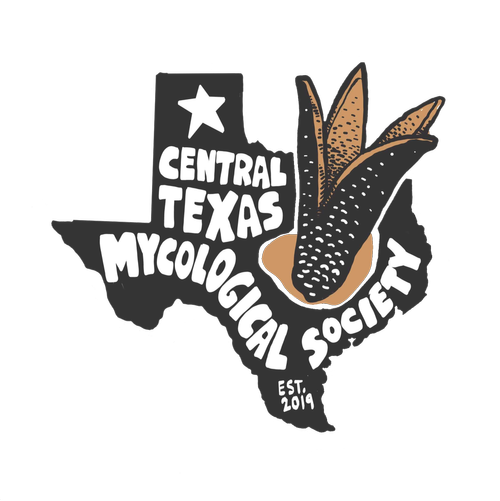How Find the Texas Star Mushroom
Also know as Devil’s Cigar, Kirinomitake, Chorioactis geaster
By following these steps, you can increase your chances of finding our elusive and fascinating state mushroom. Happy hunting!
Step 1: Understand the Ecoregion
Geographic Range: The Texas Star Mushroom is primarily found in Central Texas, with sightings reported as far south as San Antonio and as far north as the Oklahoma border in Choctaw County. It has also been observed in Wharton County near Houston.
Ecoregion: Focus on areas within the Central Texas ecoregion, particularly those with a mix of woodlands and open spaces. The mushroom is often found in areas with dead or decaying cedar elm trees.
Step 2: Identify the Right Habitat
Tree Association: Look for dead cedar elm stumps in forests where they grow. Identify cedar elm (Ulmus crassifolia) by its small, rough, serrated leaves with a sandpapery feel, corky ridged bark, and compact form. In fall, its leaves turn orange and fall after the first frost. Decomposing stumps appear as black, hollow crowns with jagged edges due to fungal decay. Search for these stumps and examine their edges and roots for cigar or star-like formations.
Season: The mushroom typically fruits from late fall into early spring after rains. Plan your search during these months for the best chance of finding it.
Step 3: Visit Known Locations
State Parks: Check out Inks Lake State Park and McKinney Falls State Park, where the mushroom has been observed.
City of Austin Parks: Zilker Botanical Garden, Shoal Creek Greenbelt, Southeast Metro Park, and the Barton Creek Greenbelt are hotspots.
Other Locations: Brushy Creek in Cedar Park, Meadow Center and Purgatory Creek in San Marcos, Landa Park in New Braunfels, and McAllister and Olmos Park in San Antonio.
Step 4: Look for Specific Features
Initial Appearance: When the mushroom initially fruits it resembles a dark brown cigar with a long stem connected to the cedar elm roots or stump.
Dehiscence: When the mushroom detects a change in humidity it splits open radially into a star-like arrangement of three to eight leathery rays. When the mushroom detects the wind it releases of a smoky cloud of spores accompanied by a hissing sound.
Step 5: Listen and Observe
Hissing Sound: The hissing sound is a unique feature of the Texas Star Mushroom. Only a few mushrooms are known to create an audible sound when spores are released. It sounds like a fizzing noise, like the bursting of bubbles in a glass of soda. Be very quiet!
Spore Release: Look for the release of spores, which can be seen as a smoky cloud. This happens after the mushroom splits open and there are multiple spore releases over a few days until the mushroom get eaten by insects and wildlife.
Step 6: Document Your Findings
Photographs: Take clear photographs of the mushroom, noting its stage of development (closed cigar shape or open star shape).
Location Data: Record the exact location where you found the mushroom. Use GPS coordinates if possible.
Share Observations: Consider sharing your findings on platforms like iNaturalist or Mushroom Observer to contribute to community science efforts and help others find them.
Step 7: Respect the Environment
Leave No Trace: Avoid disturbing the habitat. Do not remove the mushrooms or damage the surrounding area.
Follow Regulations: Ensure you have any necessary permits if you are collecting samples for scientific purposes.
Step 8: Join a Community
Central Texas Mycological Society (CTMS): Join local mycological societies or groups like CTMS to connect with other enthusiasts and participate in organized forays.
Online Resources: Utilize online resources to learn more about the Texas Star Mushroom and share your experiences.

